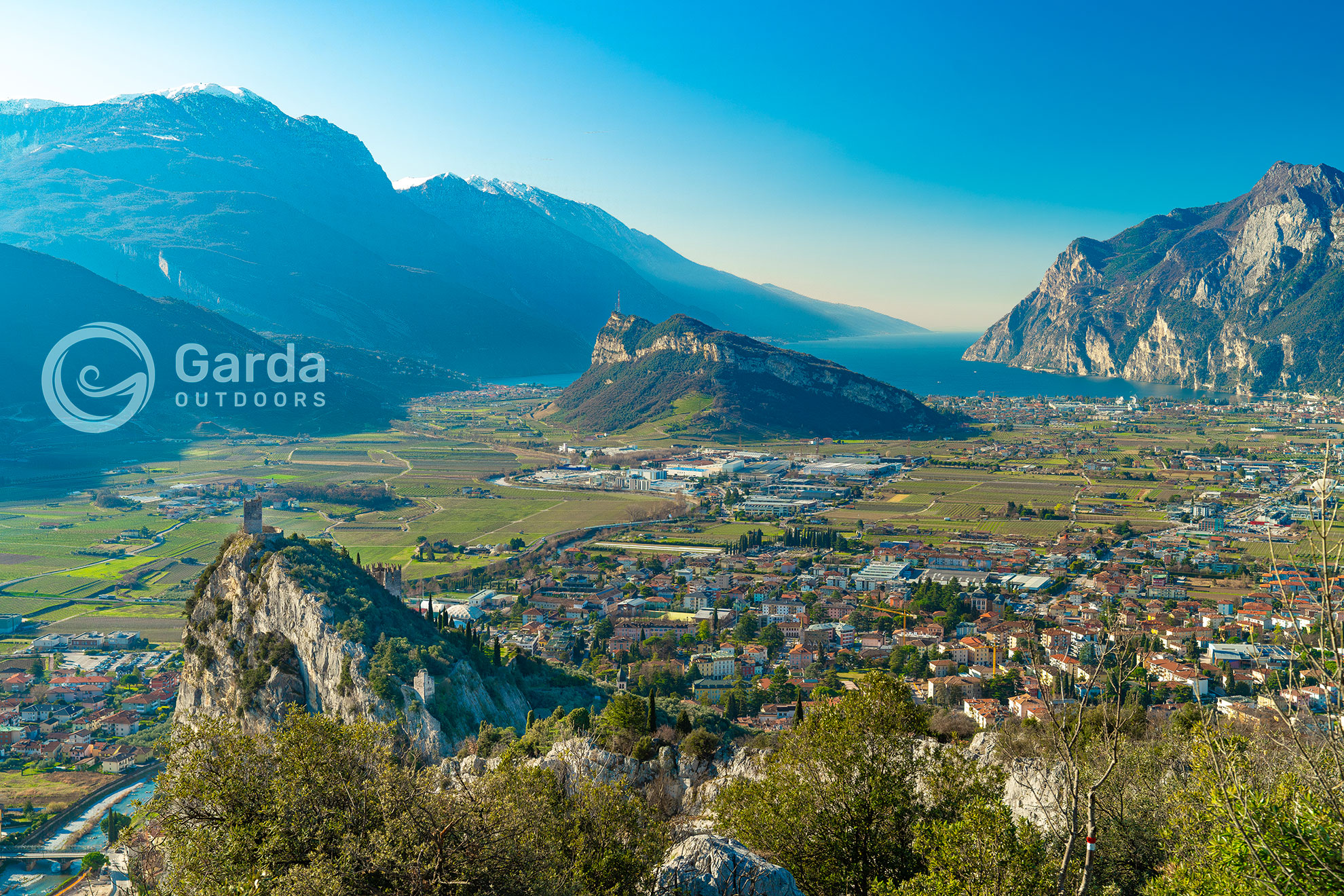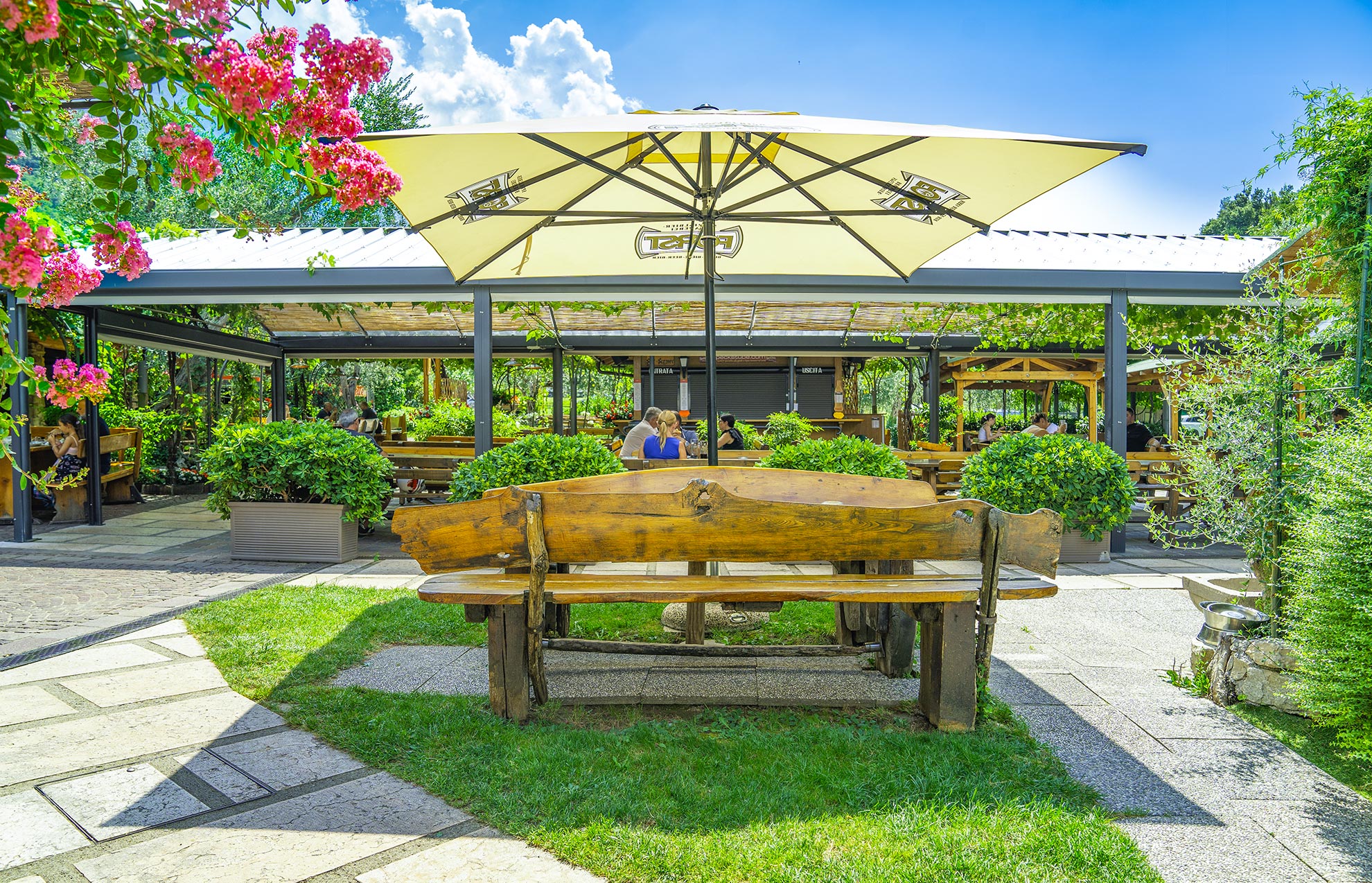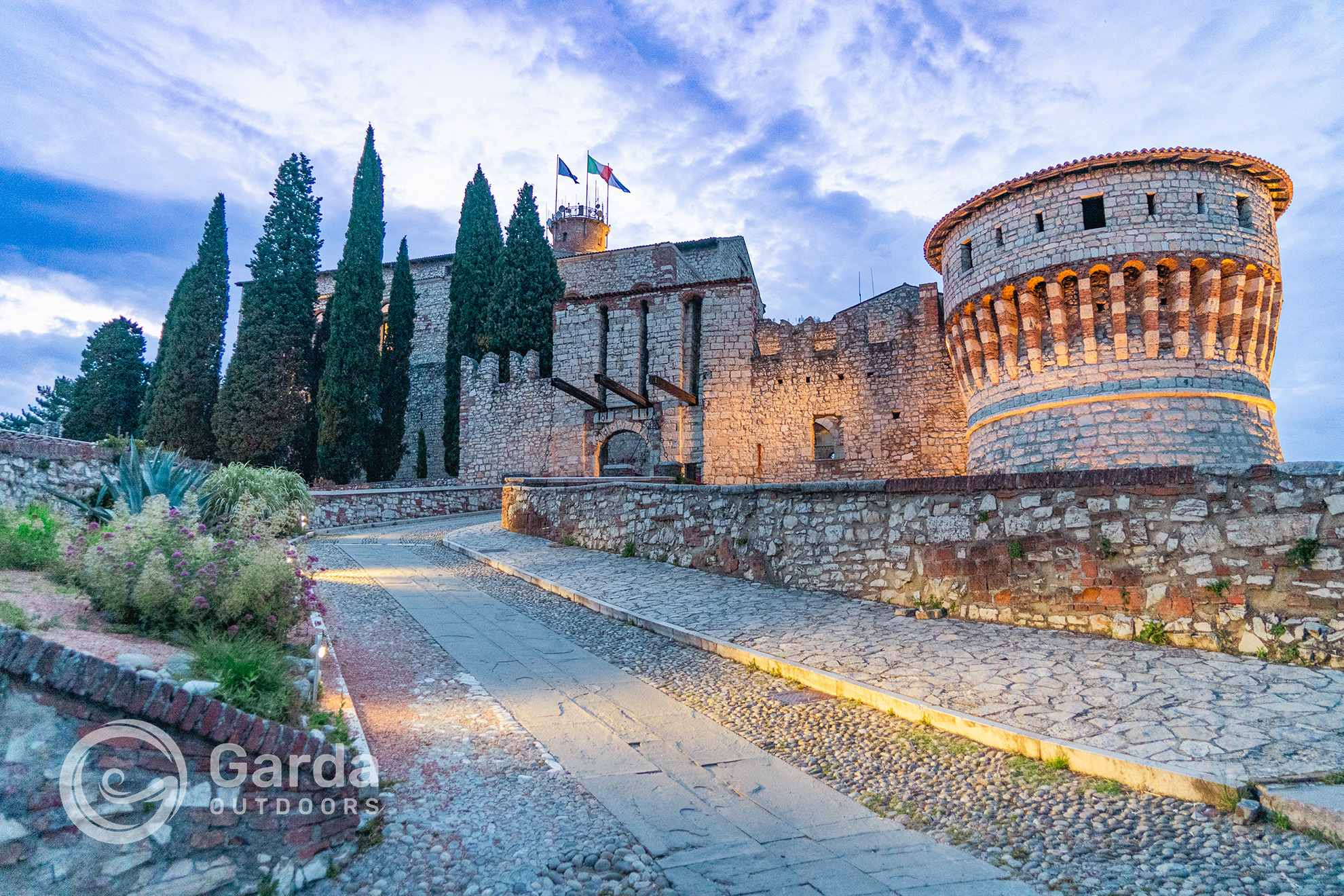“This is a beautiful city, worthy that one moves a thousand miles to see it.”. Thus said Torquato Tasso, speaking of Mantua.
Homeland of Virgilio and custodian of the works of Andrea Mantegna, Mantua is a city rich in history and architecture, above all thanks to the Gonzaga dynasty who with their patronage made it one of the major Italian centers of the Renaissance.
World Heritage Site since 2008 and the Italian capital of culture in 2016, the city is only about thirty kilometers from Lake Garda. Mantua rises on the bank of the Mincio river and extends over a peninsula embraced by three small lakes: Superiore, di Mezzo and Inferiore. Precisely because of its immersion in the water element, it was defined by the philosopher Montesquieu as the “second Venice”. And if you happen to be between July and August, you can’t miss the splendid blooming of lotus flowers that fills its lakes.
We recommend that you dedicate at least a couple of days to visit the city, perhaps starting from the famous bridge of San Giorgio, which serves as a majestic entrance, from which you can enjoy one of the most beautiful and romantic views of its skyline (advice for photographers).
What to see in a day trip in Mantua, land of the Gonzagas and a World Heritage Site.
Mantua is one of the most beautiful cities in Italy, a jewel of Italian art and architecture. Its splendor began with the era of the Gonzaga family in 1328 and continued for the next four centuries until Austrian rule. Under this rule, Mantua became one of the greatest art centers in Italy and experienced a period of unparalleled cultural and artistic flourishing. A jewel worth visiting during your vacation in Italy on Lake Garda.
Palazzo Ducale and Castle of San Giorgio.
Mantua is famous for its finely decorated palaces. You can start your visit from the Castle of San Giorgio, a structure added to the Palazzo Ducale complex only in the sixteenth century. If apparently the structure does not seem worthy of note, inside you will find the most important work of art in all of Mantua: the Camera degli Sposi painted by Andrea Mantegna, renovated and reopened to the public after the 2012 earthquake. splendid room represents a synthesis of Renaissance studies on color and perspective, celebrating the Gonzaga dynasty on its walls.
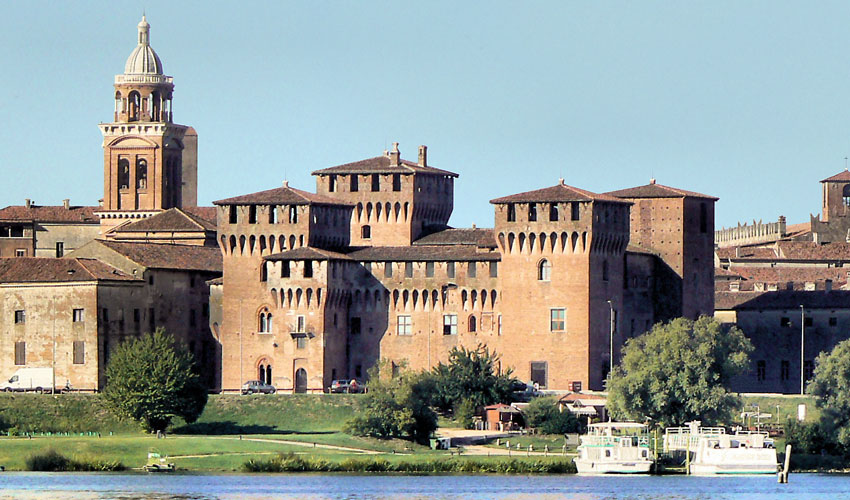
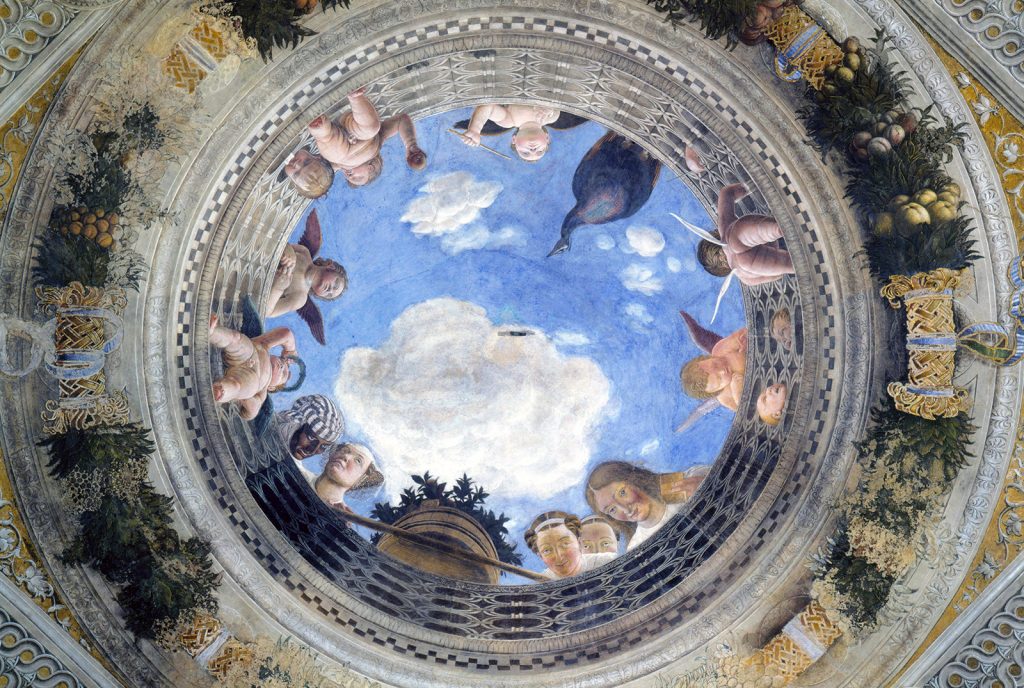
If you are never satisfied with art, you can then venture among the 500 rooms that now make up the complex of Palazzo Ducale, the royal palace of the Bonacolsi first and then of the Gonzagas. Inside you will find a splendid cycle of frescoes painted by Pisanello, Baroque masterpieces by artists such as Pieter Paul Rubens and many others, up to the Tapestry Apartment, made starting from the drawings used by Raffaello for those kept in the Vatican.
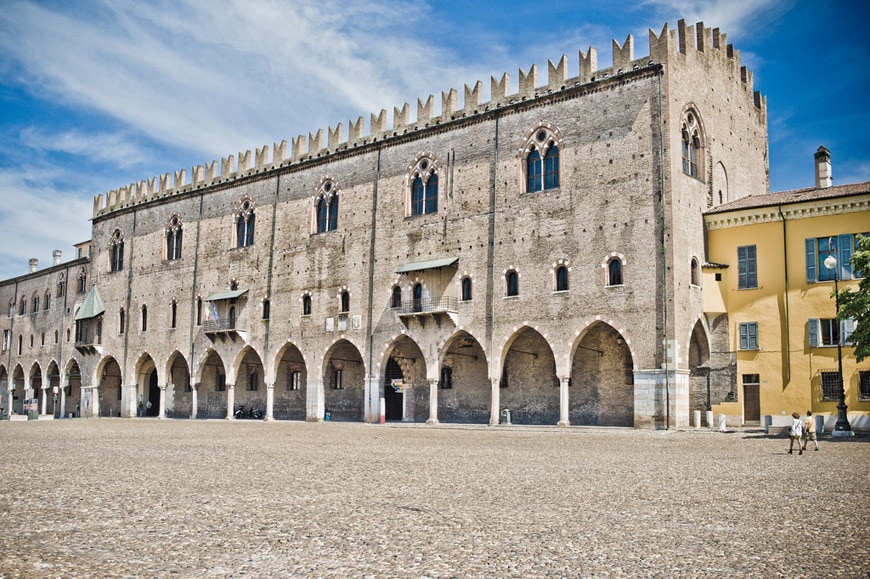
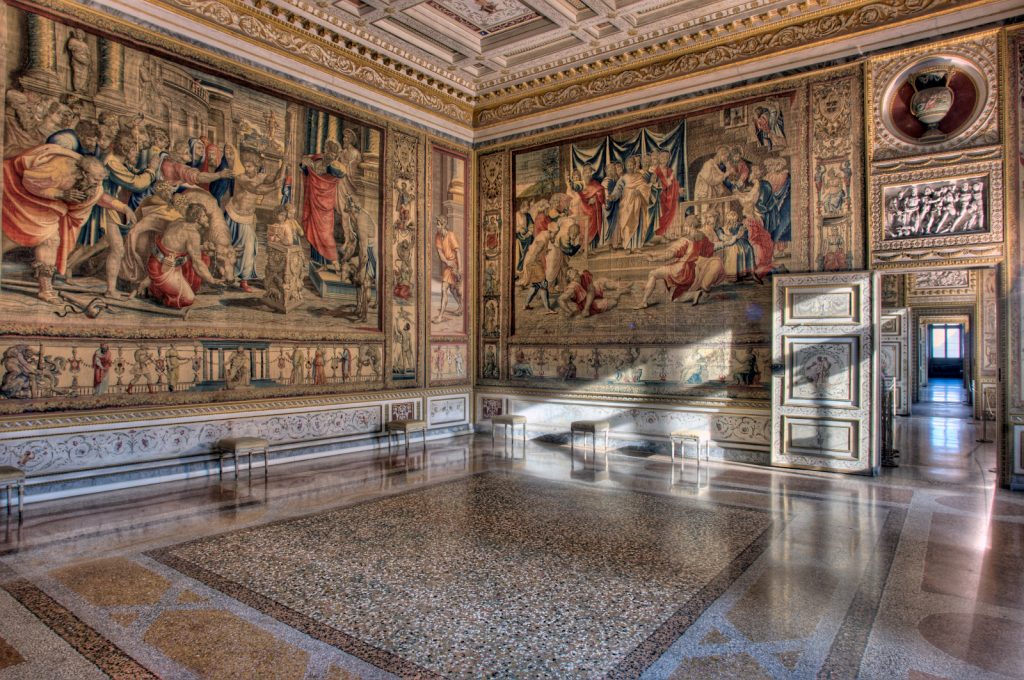
Leaving the Palazzo Ducale you will find yourself in Piazza Sordello, where you can admire the silhouettes of some of the most important historic buildings in the city and the Cathedral dedicated to St. Peter, where many members of the Gonzaga family rest.
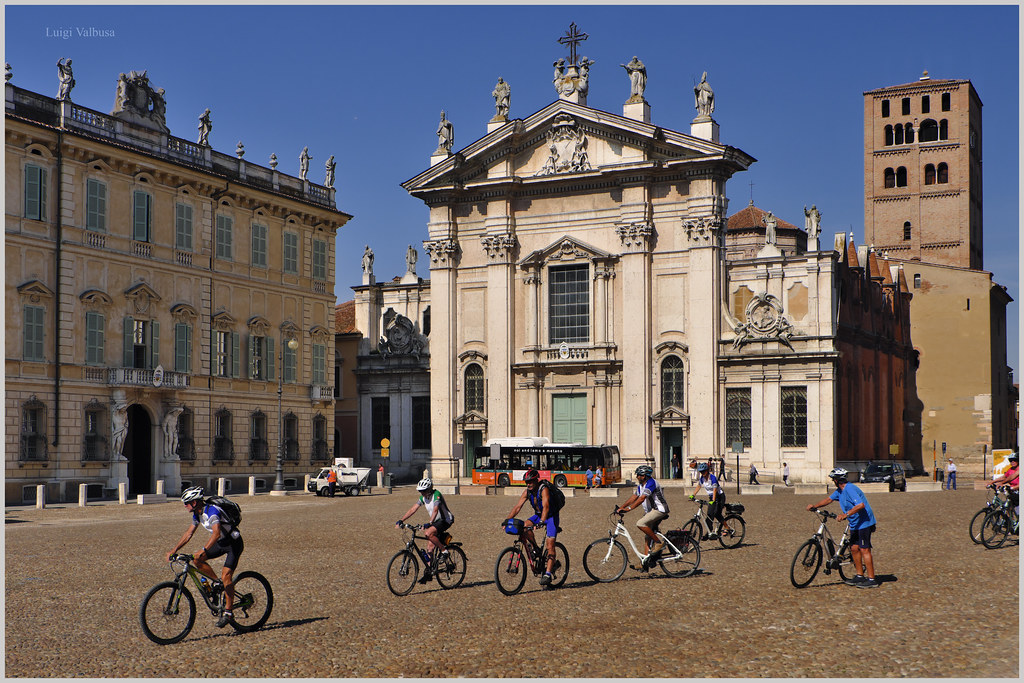
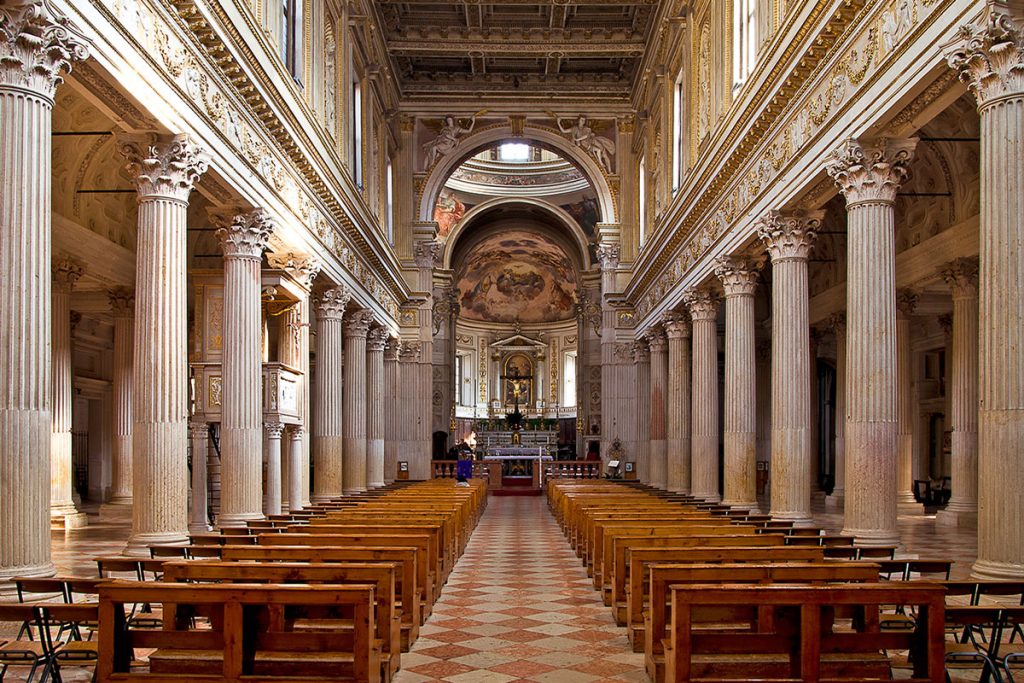
Piazza delle Erbe and Rotonda di San Lorenzo.
A few meters on foot under the arcades, once the seat of the historic shops of Mantua, we find ourselves in Piazza delle Erbe, medieval heritage and commercial hub of the ancient city, as in many Venetian and Lombard cities. The Merchant’s House, the Astronomical Clock Tower and, next to it, the Palazzo della Ragione overlook the square.
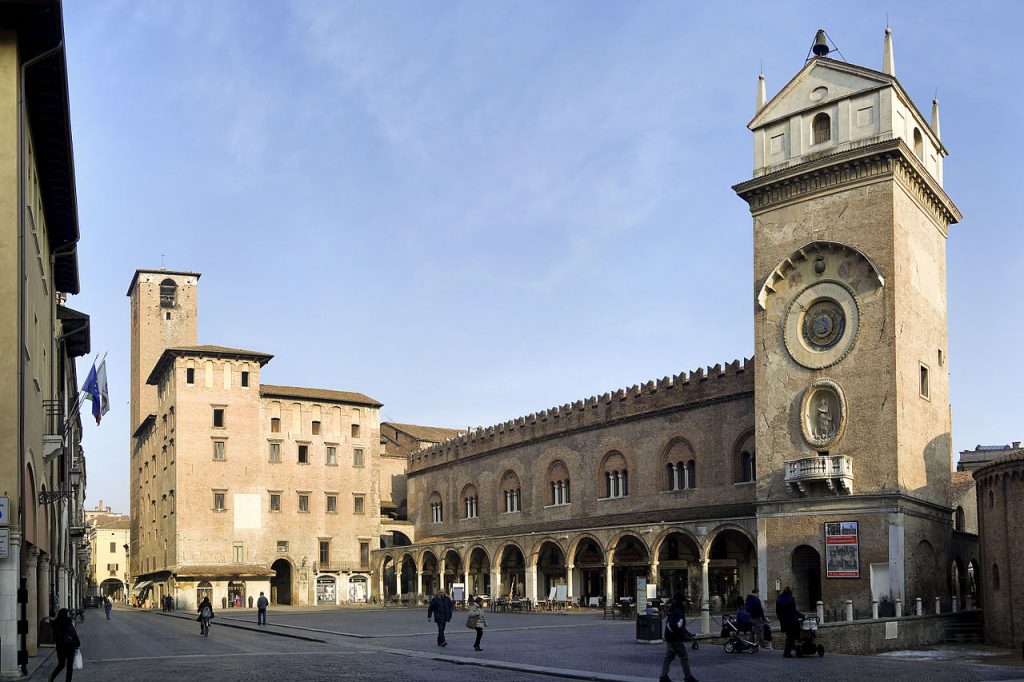
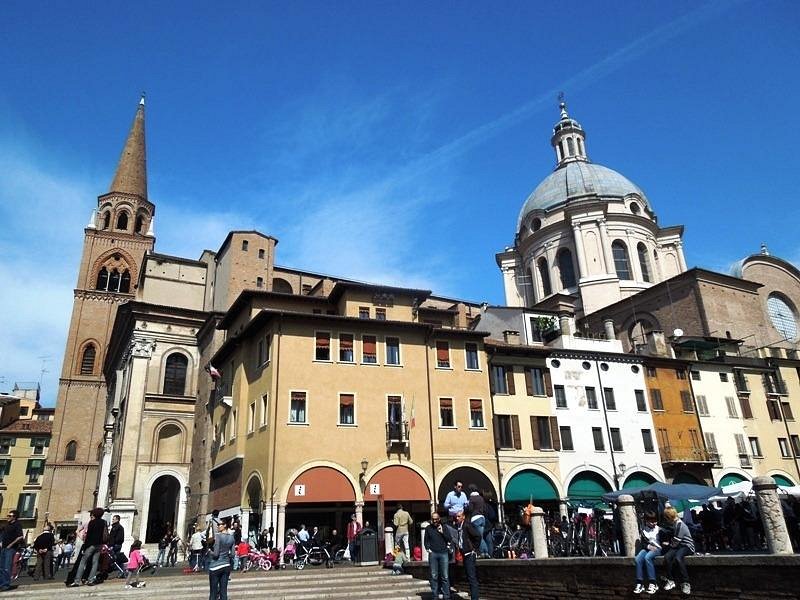
In addition to the Palazzo del Podestà, however, our attention is drawn to the Rotonda di San Lorenzo, the oldest church in the city. Dating back to the 11th century, tradition has it that it was commissioned by Matilda di Canossa in the image of the Church of the Holy Sepulcher in Jerusalem. Over the centuries, vicissitudes transformed it first into a warehouse and then into a private courtyard, until it returned to its former glory in the twentieth century.
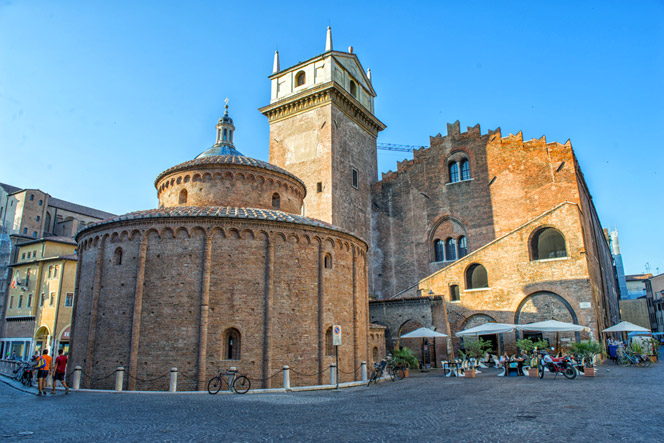
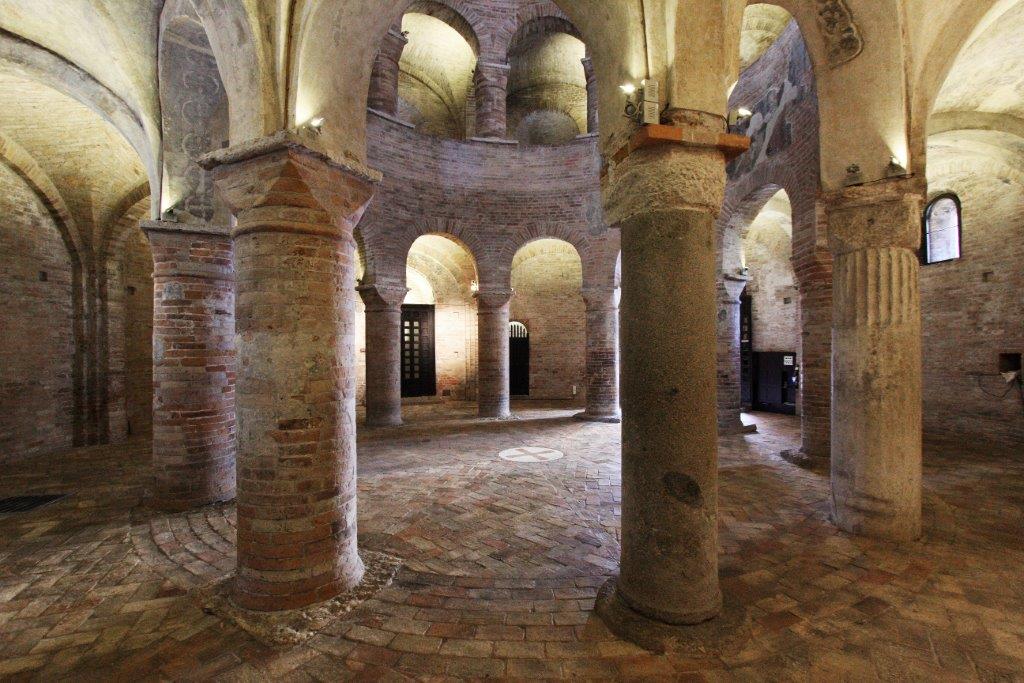
The Basilica of Sant’Andrea.
As soon as they see it, many students will exclaim: I have already seen this in the art history book! The Basilica of St. Andrea, the most important in Mantua, is in fact one of the architectural masterpieces of the Renaissance. Designed by Leon Battista Alberti, it houses the tomb of Andrea Mantegna, was decorated by Correggio and Giulio Romano.
But the most important relic, kept in the crypt closed with 12 keys and carried in procession through the city only on Good Friday, is the earth with the blood of Christ that the Roman centurion Longinus, who pierced the side of Jesus, collected at the foot of the Cross. The legend says that it was Saint Andrew who indicated where the precious urn was hidden, which was lost after the death of Longinus.
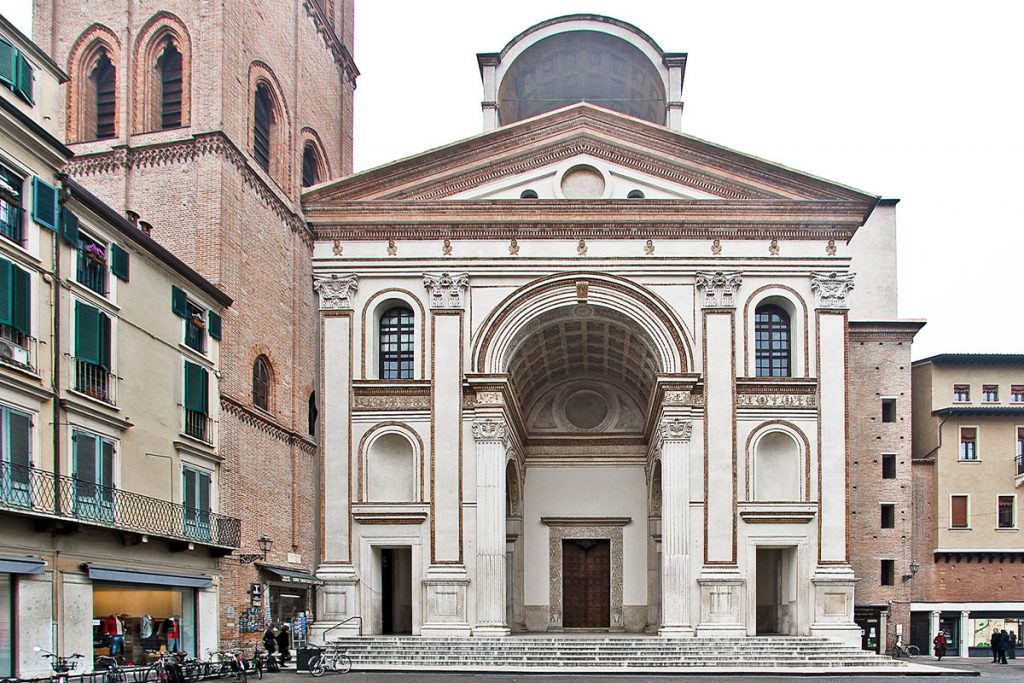
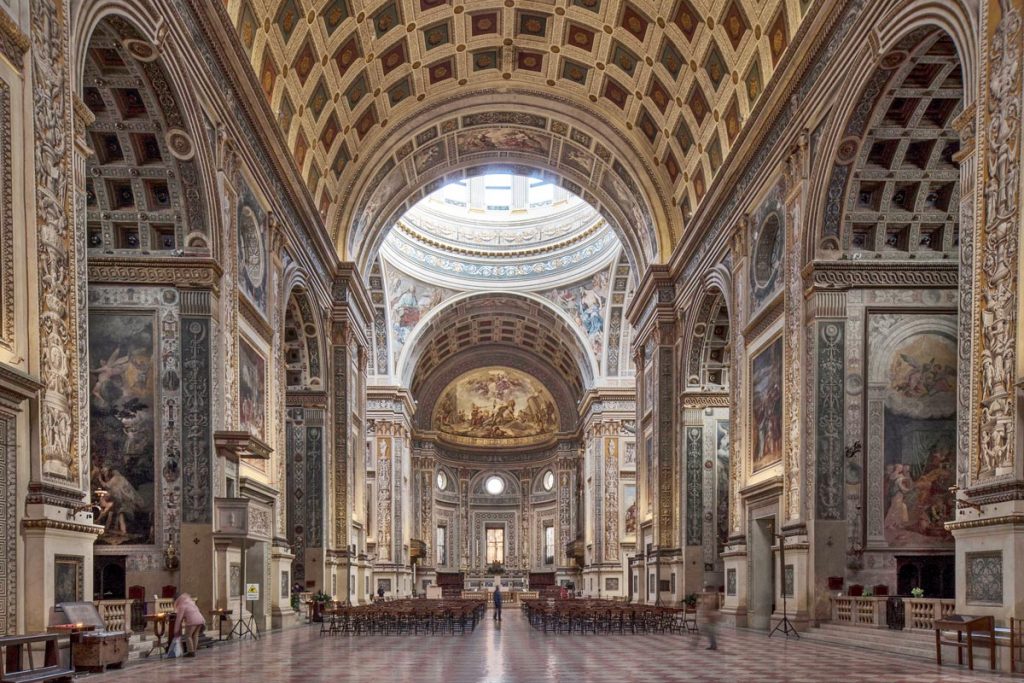
The scientific theater of Bibiena.
The Bibiena scientific theater, which takes its name from its builder Antonio Galli Bibiena, was inaugurated on December 3, 1769. It was also called the Scientific Theater, available to the Virgilian Academy, intended for performances but also for scientific experiments and doctrinal exhibitions.
A little curiosity: on January 16, 1770 the Bibiena Theater hosted a piano concert by the young Mozart. It seems that the building impressed Mozart’s father so much that he wrote to his wife from Mantua: “Today I saw the most beautiful theater in the world”.
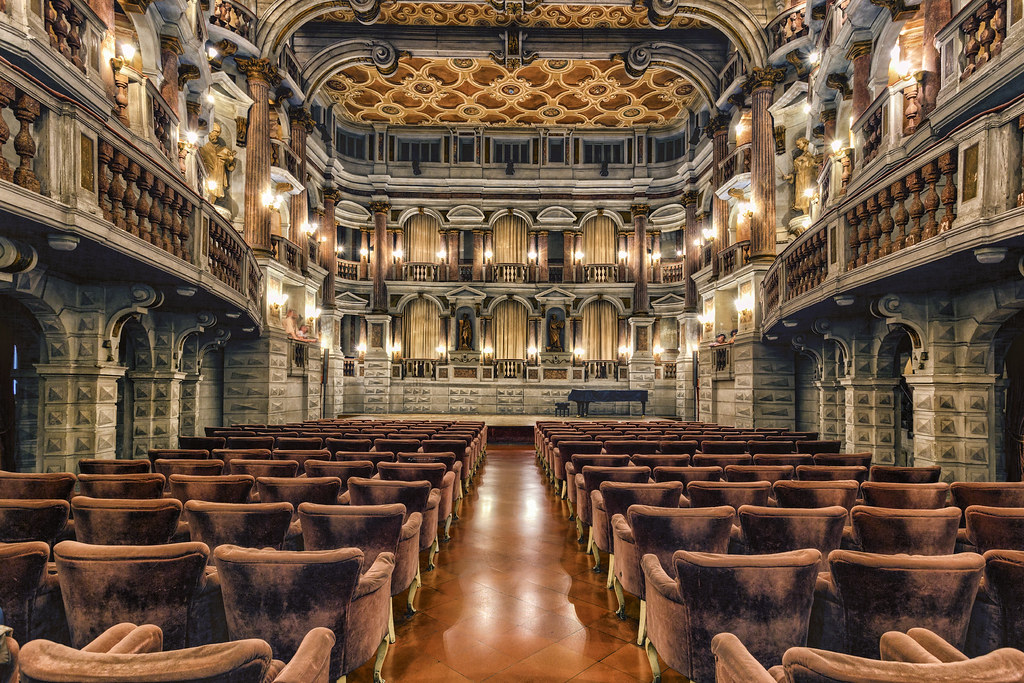
Palazzo Te and the Loggia delle Pescherie.
The construction of Palazzo Te, another of the masterpieces of the city of Mantua, is due to the artist’s ego of the architect Giulio Romano. Entrusted to him in 1524 by Federico II Gonzaga with the task of arranging the old stables of the island of Teieto to make it a summer residence where you can rest or have fun. But faced with the grandeur of the Roman’s project, Francesco II Gonzaga immediately started the works, transforming Palazzo Te into the place used to welcome the most illustrious guests visiting the city.
Getting lost in the gardens, facades and halls of the building is not difficult, surrounded by so much beauty. Of particular note, however, is the Sala dei Giganti, entirely frescoed with the Gigantomachia narrated by Ovid. In the center of the room, the visitor will feel as though catapulted into the middle of the battle, thanks to a refined use of Romano’s perspective technique.
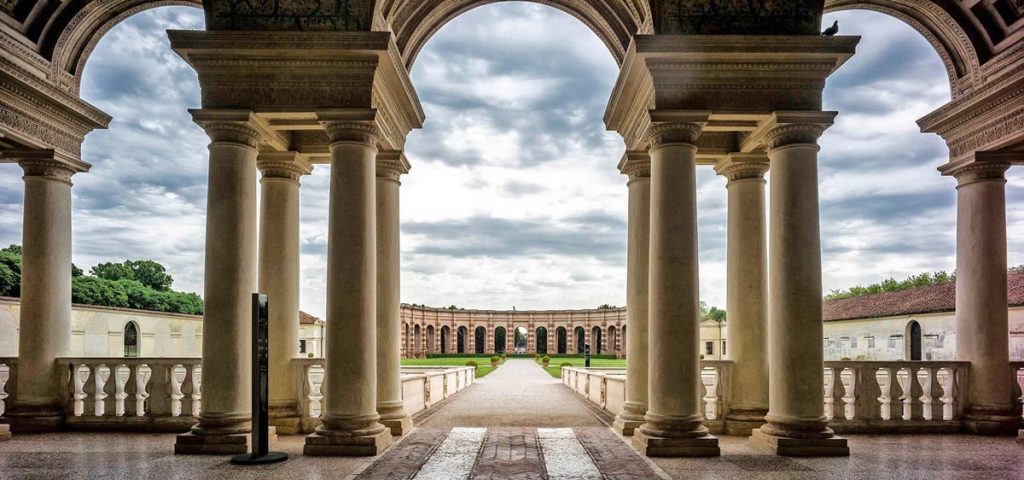
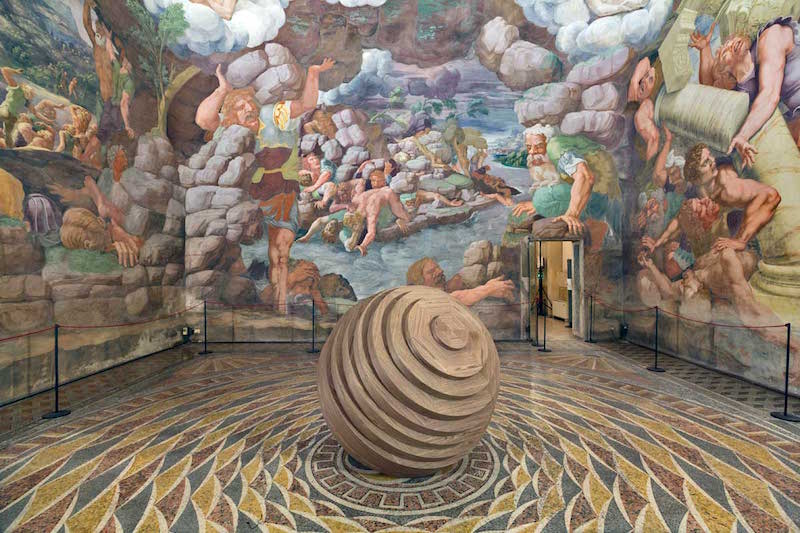
Following the Rio, a river that crosses Mantua in several points, along the path to Palazzo Te you will first arrive at the Loggia delle Pescherie. We are in one of the most characteristic corners of Mantua, an ideal glimpse for a photo but which over the centuries has played a fundamental role for the city. Here the fish caught in the Po and in the lakes of Mantua arrived, which was then sold in the stalls of the adjacent market. Built in 1536 on a project by the architect of Palazzo Te, Giulio Romano, they were dedicated to the fish trade. It consisted of two arches with attics built around the medieval bridge that overlooked the Rio. Next to it there were also the Beccherie, demolished in 1872. Today only a long row of columns with the arcade below remain of that original building, but they are sufficient to create an enchanting scenery, especially at sunset. Here on Saturday the Lungorio Farmer’s Market takes place, a must if you are in Mantua on the weekend.
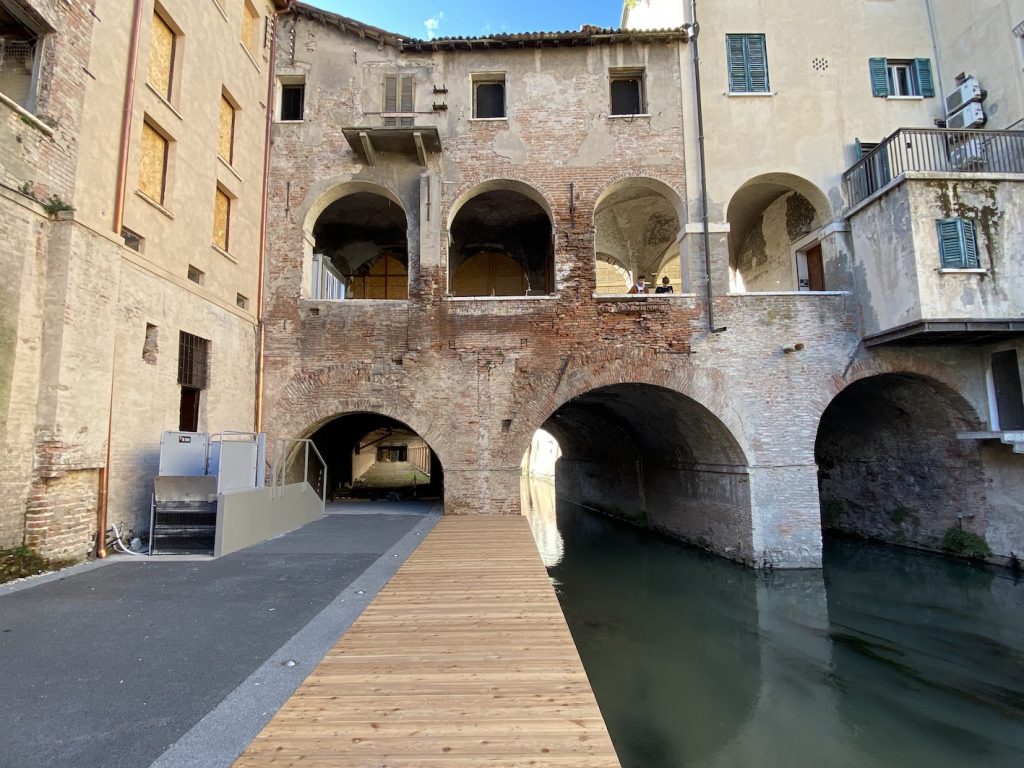
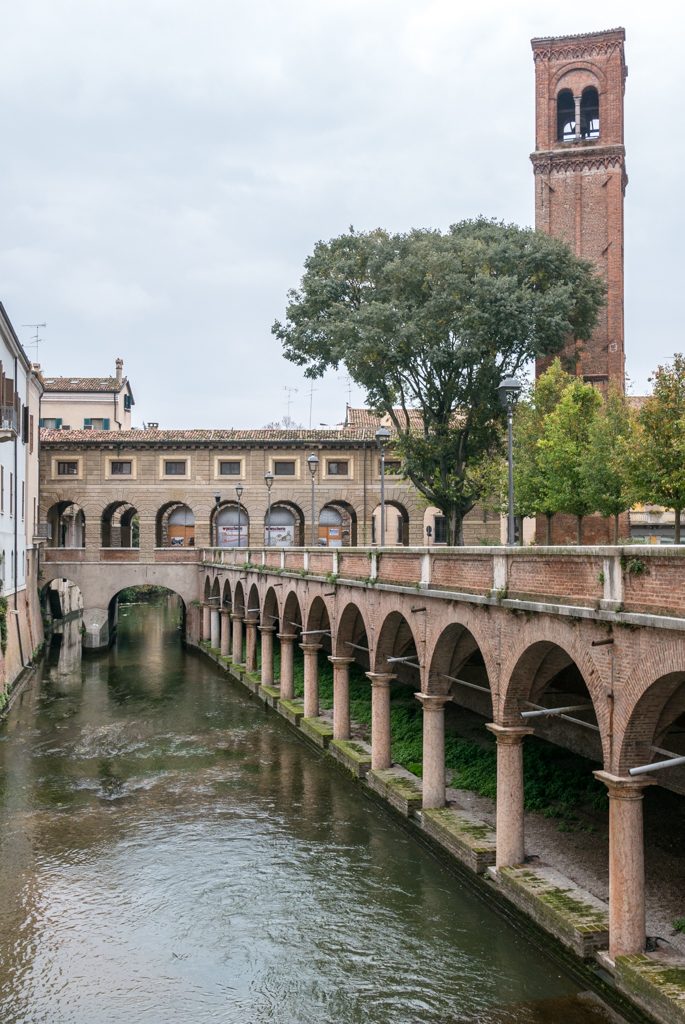
What to see in a day trip in Mantua: its hidden treasures.
Here are some gems for those who want to know unusual stages compared to traditional ones.
The Teresian Library.
This library has deep historical roots in the social fabric of the city and its province. In fact, it boasts over two centuries of activity, being open to the public almost continuously since March 30, 1780. It was established by the will of the Empress Maria Theresa of Austria and that is why it is known with the name of “Teresiana”. The library is located in the center of Mantua, in via Ardigò 13.
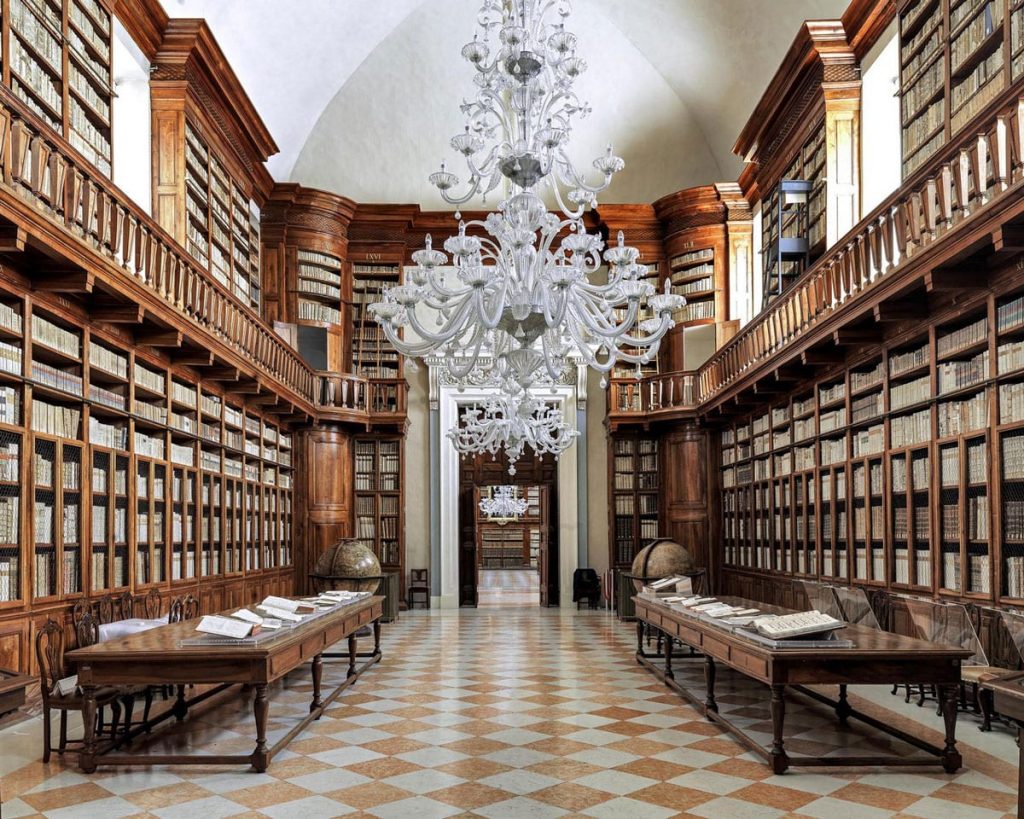
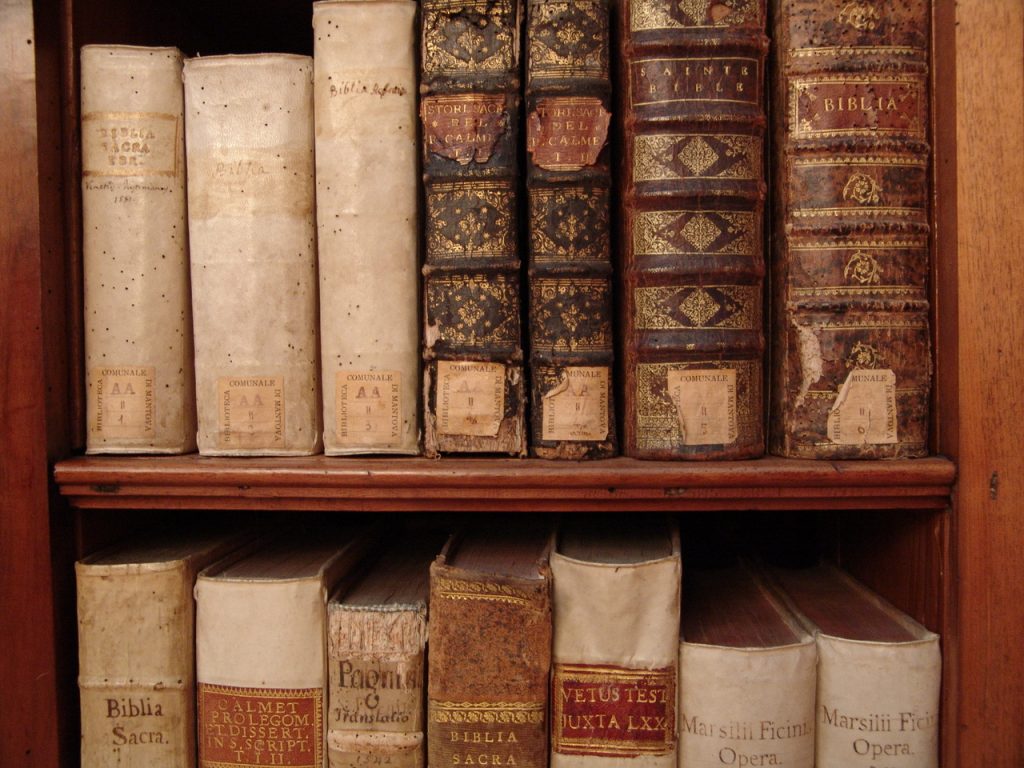
The Merchant’s House.
It was built in 1455 and its owner was Giovanni Boniforte da Concorezzo, of Milanese origins. Boniforte settled in Mantua with the approval of the Gonzagas, who approved the arrival of foreign merchants in the city, and then had his shop built, specializing in fabrics and fine canvases imported from Venice.
It is enough to look up at this building to notice its beauty and the artistic diversity with which it is endowed: it differs a lot from what surrounds it for the oriental appeal that characterizes the splendid windows. Certainly, this place is one of the most evocative art corners of Mantua.
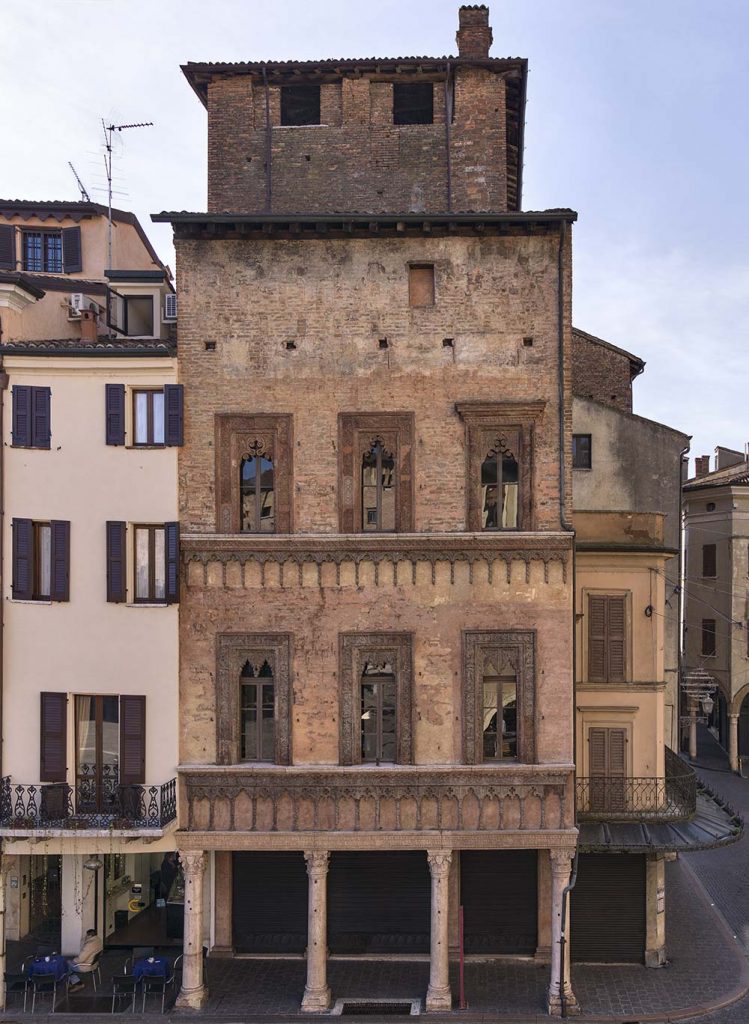
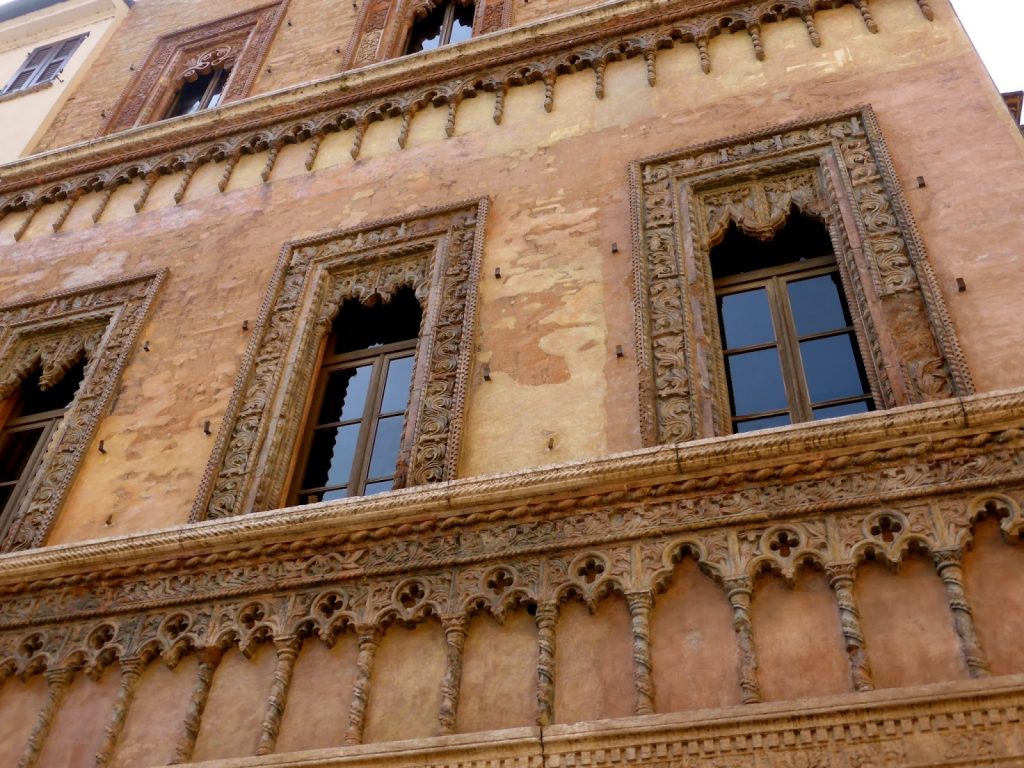
The Museum of time and its measure.
Near the Merchant’s House, in Piazza delle Erbe, stands the Renaissance Clock Tower which houses a very special museum. Time is the protagonist here, and not only for the presence of the magnificent astronomical clock made in 1473 by Bartolomeo Manfredi (mechanic, mathematician and astrologer at the Gonzaga court).
From floor to floor, the visitor can experience a unique journey to discover the notion of time, through a path between display cases and objects that allow you to learn everything there is to know about one of the most intriguing mysteries of science.
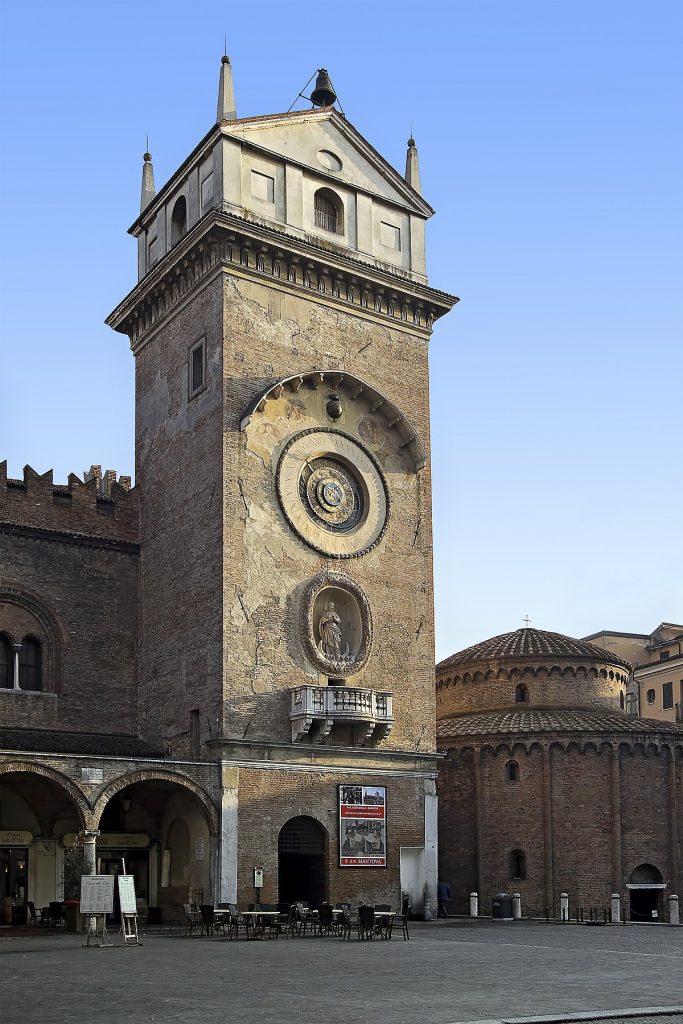
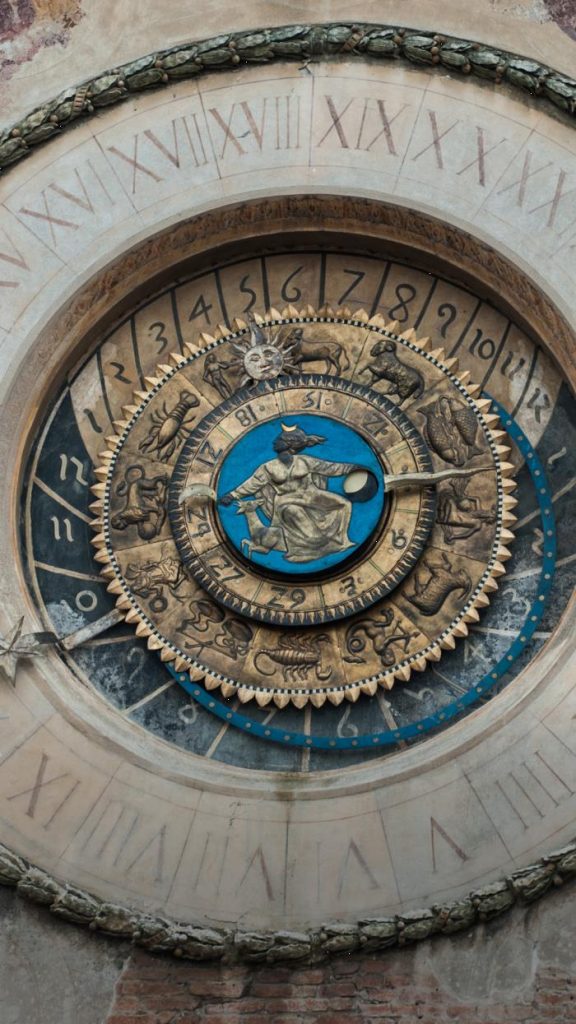
Boat cruise on the Mantuan lakes and the Mincio River Park.
Seeing Mantua from the water is an unmissable emotion. There are several boat cruises that will take you to discover its lakes, the Mincio River Park, its hinterland up to the Po locks.
We leave you some sites with the best proposals: Motorships Andes Negrini and Navi Andes. Have fun!
Alternatively, you can take a nice walk along the lakefront, which is also ideal for jogging.
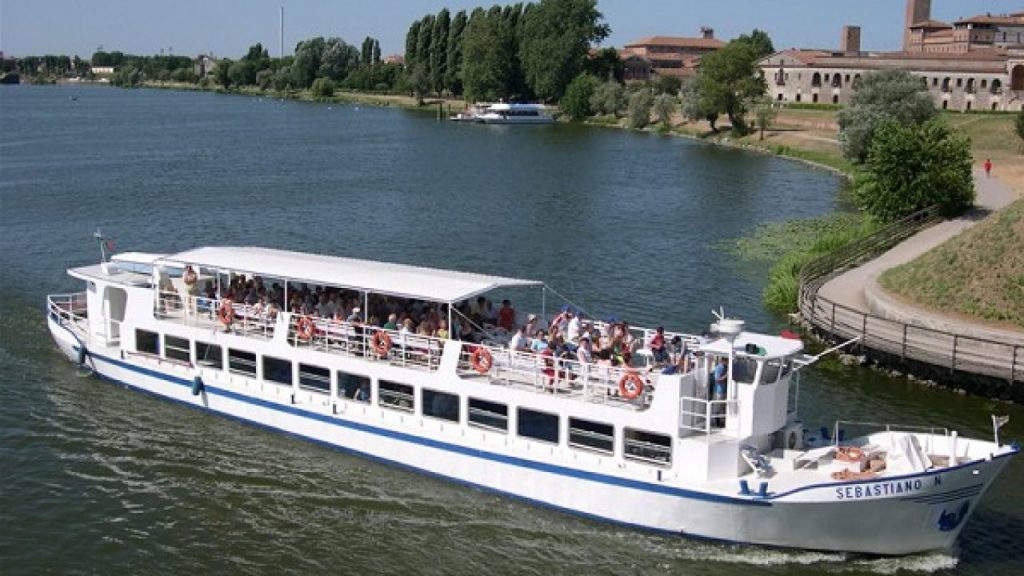
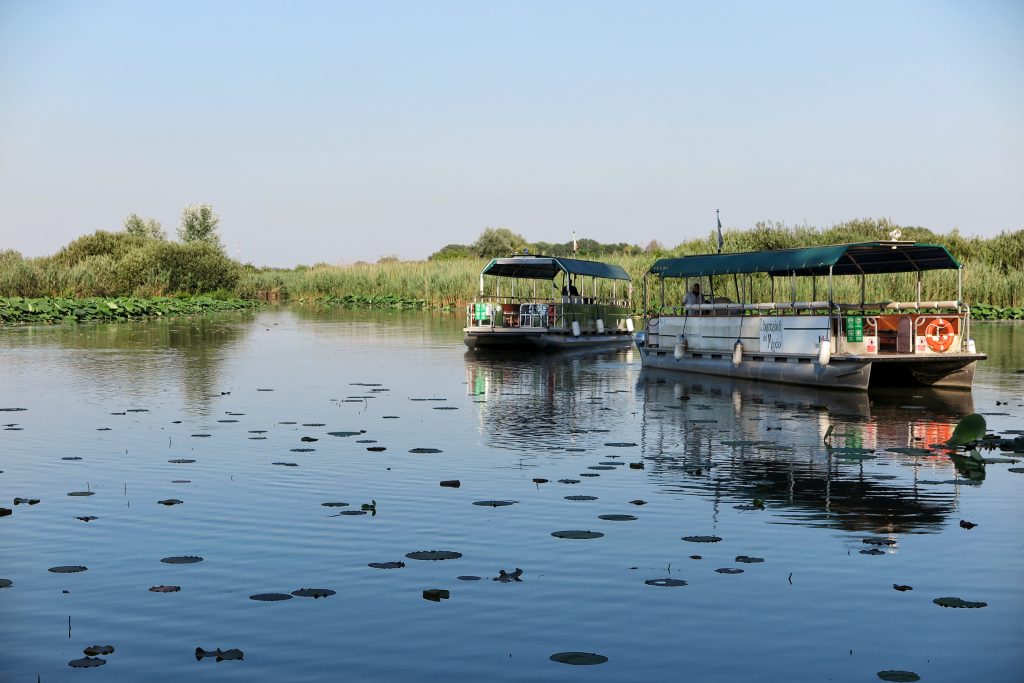
Mantua and the Literature Festival.
Since 1997, Festivaletteratura has been one of the most anticipated Italian cultural events of the year, five days of meetings with authors, readings, guided tours, shows, concerts with artists from all over the world, who meet in Mantua to live in a unforgettable party atmosphere.
The Festival is attended by internationally renowned narrators and poets, the most interesting voices of emerging literatures, and also essays, musicians, artists, scientists, according to a broad and curious meaning of literature, which does not deny the knowledge of territories and languages far from the traditional canons.
Particular attention is paid to children and adolescents: numerous meetings, shows and workshops are designed only for children or for adults and children together. All in Mantua, a pearl of the Renaissance recognized by UNESCO as a World Heritage Site, where the compact dimension of the city brings authors and readers together, allowing everyone to move easily on foot from one appointment to another.
For all the updated information on the next Literature Festival click here.
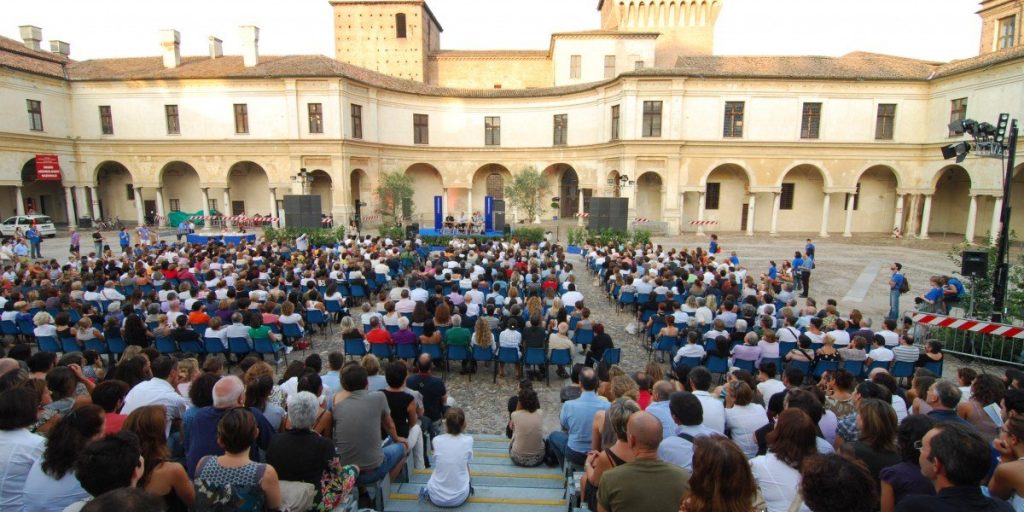
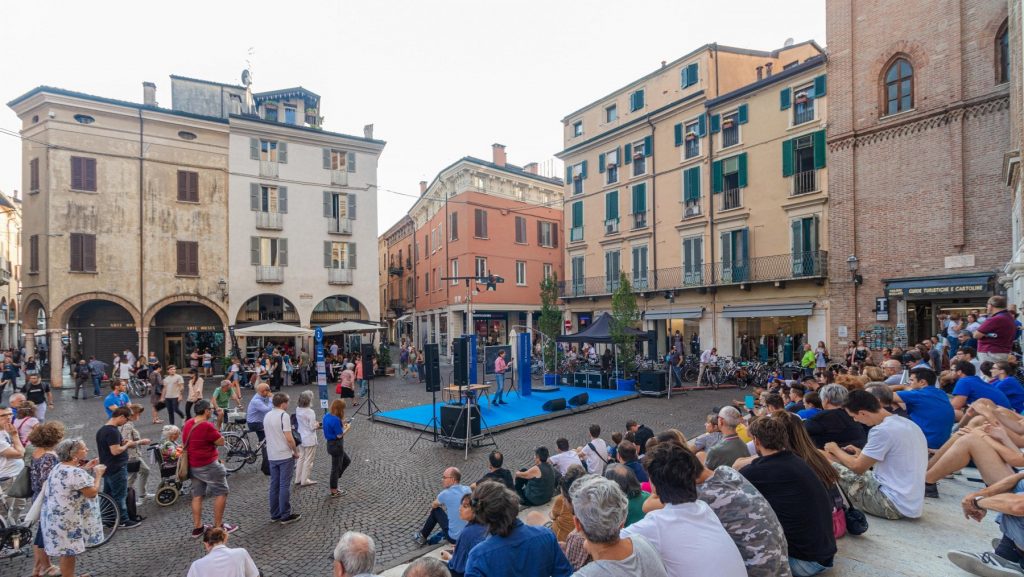
Sabbioneta.
When Mantua became a Unesco World Heritage Site in 2008, Sabbioneta was also joined as an ideal Renaissance city. Born out of nowhere in the Po valley in the second half of 1500, Sabbioneta was the realization of the humanistic dream of Vespasiano Gonzaga, who unfortunately died with him.
The city, built from scratch, was to become a “little Athens”, in which each building is built respecting the canons of the ancient classical Greek and Roman cities. Definitely worth visiting are the Gallery of the Ancients, the longest in Italy after that of the Maps in the Vatican and that of the Uffizi in Florence, Palazzo Ducale, the Duke’s residence when he was in government, and Palazzo Giardino, a place of leisure and rest.
Also unique of its kind is the Teatro all’Antica, the first example of a permanent theater in Europe, built by Vincenzo Scamozzi, former architect of the Teatro Olimpico in Vicenza. Those who have been lucky enough to visit the city of Palladio will immediately notice the similarities.
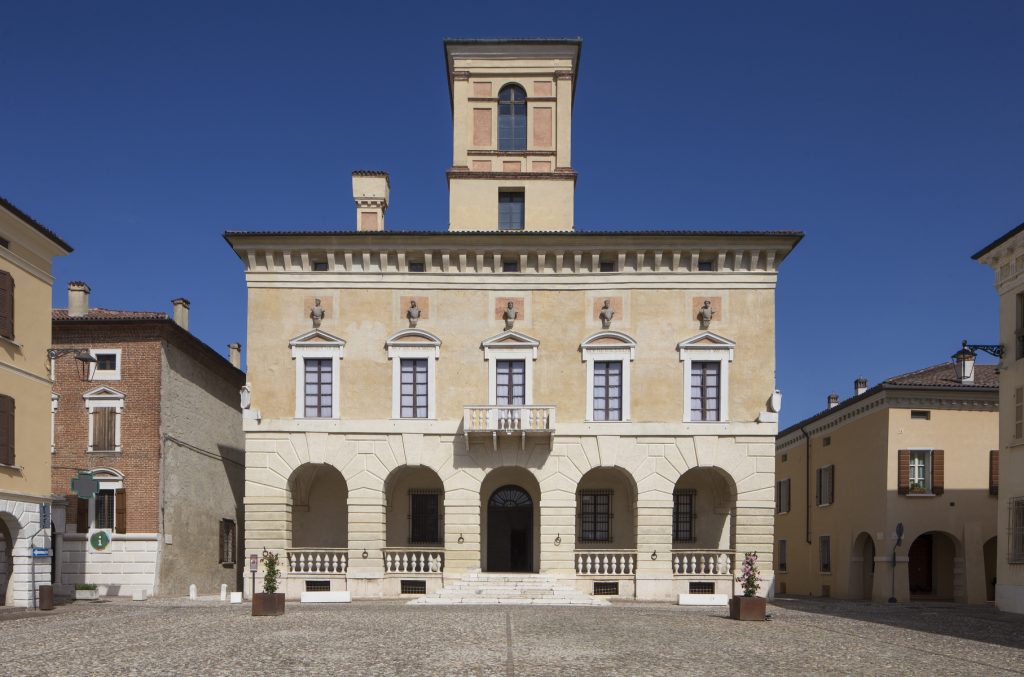
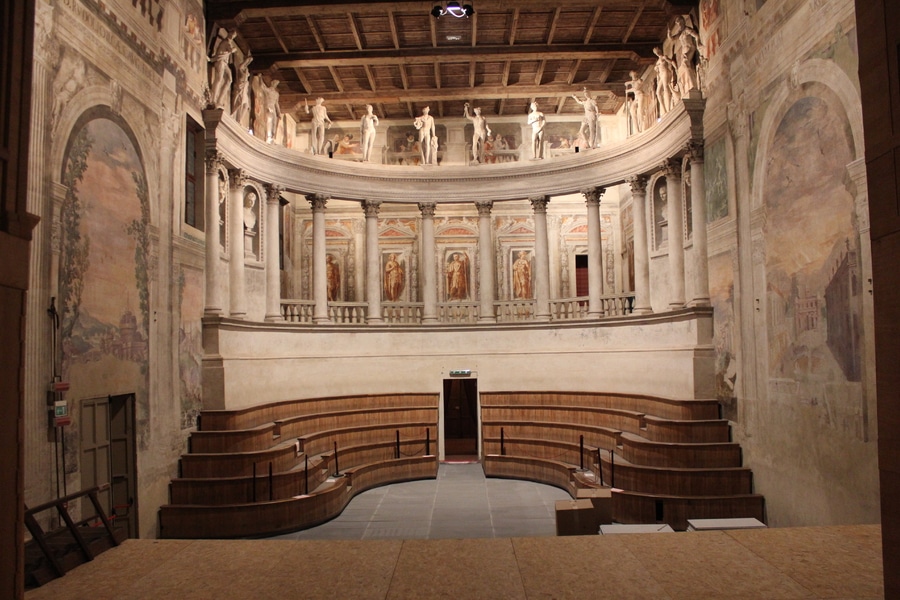
What to eat in Mantua.
Lake Garda is an accomplice of the delicacies that we can find among the Mantuan fields: juicy melons and watermelons during the summer, and autumn pumpkins. “Why?” you will ask. The water of the lake serves as a supply to water these precious crops, which we then find at the table in various recipes.
Scattered around the plain we then encounter several pig farms and many rice fields (here the Vialone Nano and Carnaroli varieties are grown).
But what are the king dishes of Mantuan cuisine?
Among the first courses we find the famous Pumpkin Tortelli (in whose filling, in addition to the pumpkin, cinnamon and mustard are also added), the Risotto “alla Pilota” (seasoned with pork pistume locally called Tastasal) and fresh pasta all ‘ egg, including agnolini and tagliatelle, which is eaten with meat broth.
Among the second courses there are many meat-based dishes: cotechino, mixed boiled meat, braised meat, roast; but also of freshwater fish such as eel and river shrimp.
In the past, in fact, fish from the fishmongers came from the Upper Lake, the Lower Lake, the Mincio River and the rice fields. A long and complex history of native fish that has created, over the centuries, an extraordinary and complex gastronomy.
We also find dishes based on frogs (such as risotto or fried) and snails.
Then let’s not forget all the cured meats and cuts of meat deriving from pork and the excellent Grana Padano, often accompanied by sweet or very spicy mustards.
At the end of the meal, the amazing Sbrisolona is a must, a dry cake made with almonds, so called because it crumbles easily.
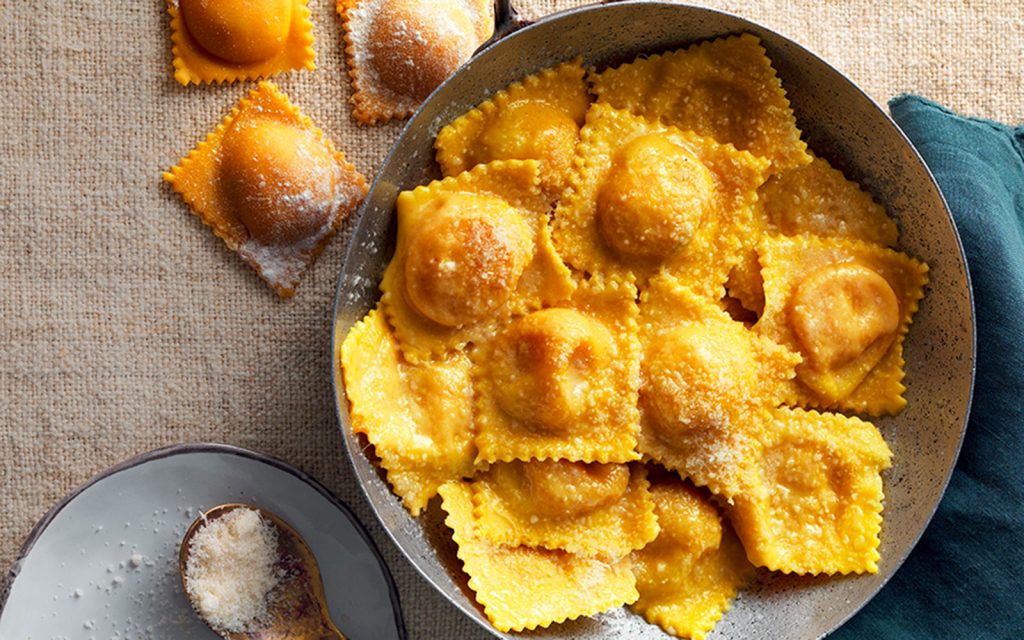

How to get to Mantua.
By car: for those arriving in Mantua by car via the A22 motorway (Autostrada del Brennero), the possible exits are Mantova Nord (for those coming from Brenner / Verona) and Mantova Sud (for those coming from Modena / Bologna).
By Train: the Mantua railway station is located in Piazza Don Leoni, a few minutes from the historic center of Mantua. The Mantua railway station is located on the railway lines: Verona – Mantua – Modena – Bologna Mantua – Cremona – Milan Mantua – Monselice – Padua Mantua – Suzzara – Ferrara.
By plane: for those who want to arrive in Mantua by plane, the closest airports to Mantua are: Verona “Valerio Catullo” airport, located in Villafranca di Verona – Parma “Giuseppe Verdi” airport – Bergamo “Orio al Serio” airport – “Gabriele D’Annunzio” Montichiari Airport (Brescia).
Hotels – Restaurants – Experiences in Mantua.
As with all of Lake Garda, there are also many structures in which to stay in Mantua, from small and well-kept B&B’s to resorts with wellness centers and beauty services, in the section dedicated to hotels in Mantua find all the information you need to find the most suitable accommodation for you.
The same goes for restaurants, at this link you will find our selection of restaurants in Mantua. Remembering that Lake Garda offers several starred restaurants and the quality of the culinary offer is very high.
There are many activities and experiences you can do in Mantua and on Lake Garda, so we recommend you visit the section dedicated to experiences in our magazine by clicking here.
See you next time dear Outdoors!
Silvia Turazza – Garda Outdoors editorial staff
